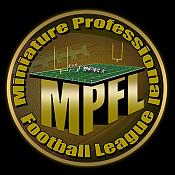
11-19-2008, 09:06 PM
|
 |
MFCA MEMBER
|
|
Join Date: Nov 2006
Location: ALEXANDRIA VA
Posts: 849
|
|

Quote:
Originally Posted by RavennaAl

I just got to thinking (probably not a good thing) but if one was using passing sticks, and you want the receiver to run a down and out pattern, how could you do that when placing the passing stick in front of the receiver would spot the ball out of bounds?? That would require the player to run inbounds a good 10 - 15 yards first, instead of straight near the sidelines and turning.  Would it make sense to have a special passing stick just for that kind of pass???  But then, if you did, wouldn't it make it almost automatic to complete that sort of pass if a special short stick was used for those occasions??????    |
The procedures for using the stick passing is the key.
First you need to have a range that tells you what stick to use. Example: From the LOS to 10 yards down field is a 3 yard stick, 11 yards down field to 25 yards from the LOS is a 5 yard stick.
Now when you stop the board you see what zone you're receiver is in and use the stick according to the zone the receiver is in. That way you can run all the pass routes. When the board stops turn the receiver to run the pass route you want, then place the ball in front of the receiver according to the range he is in ( 3,5,etc ) and away from the defender much the same way as the QB would do in throw the ball to a place were his player has a better chance to make the reception.
Now Please do not be offended or take this the wrong way, but if you are using any form of stick passing the is not in guide lines with the one that all of them came from ( Pass Placement ) then you will not be able to reach that goal because the sticks were made too long. This was done to penalize who ever used them for not using the ttqb.
Stick passing requires that players be placed on magnets and placed in strategic locations to defend the pass.
|